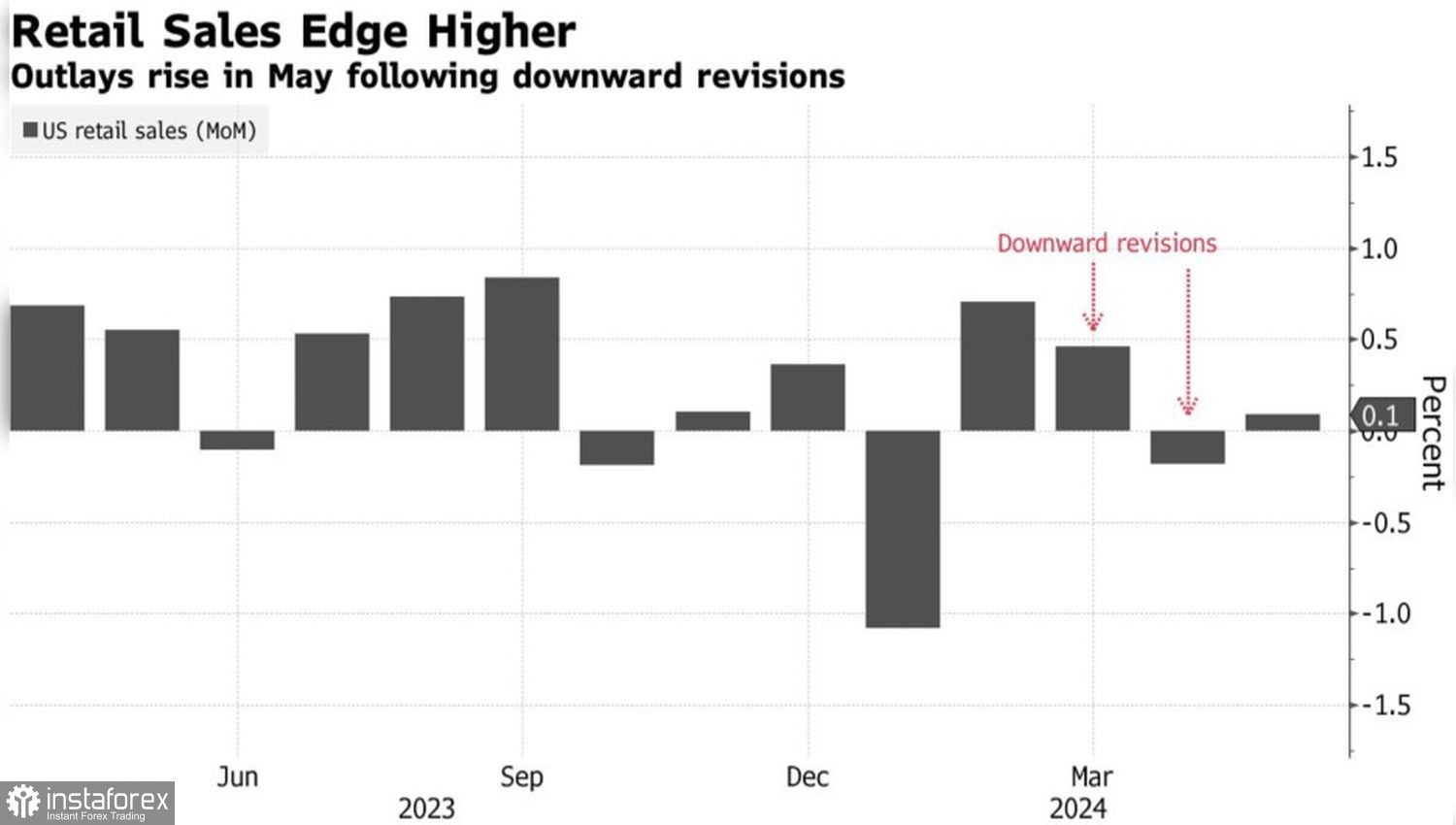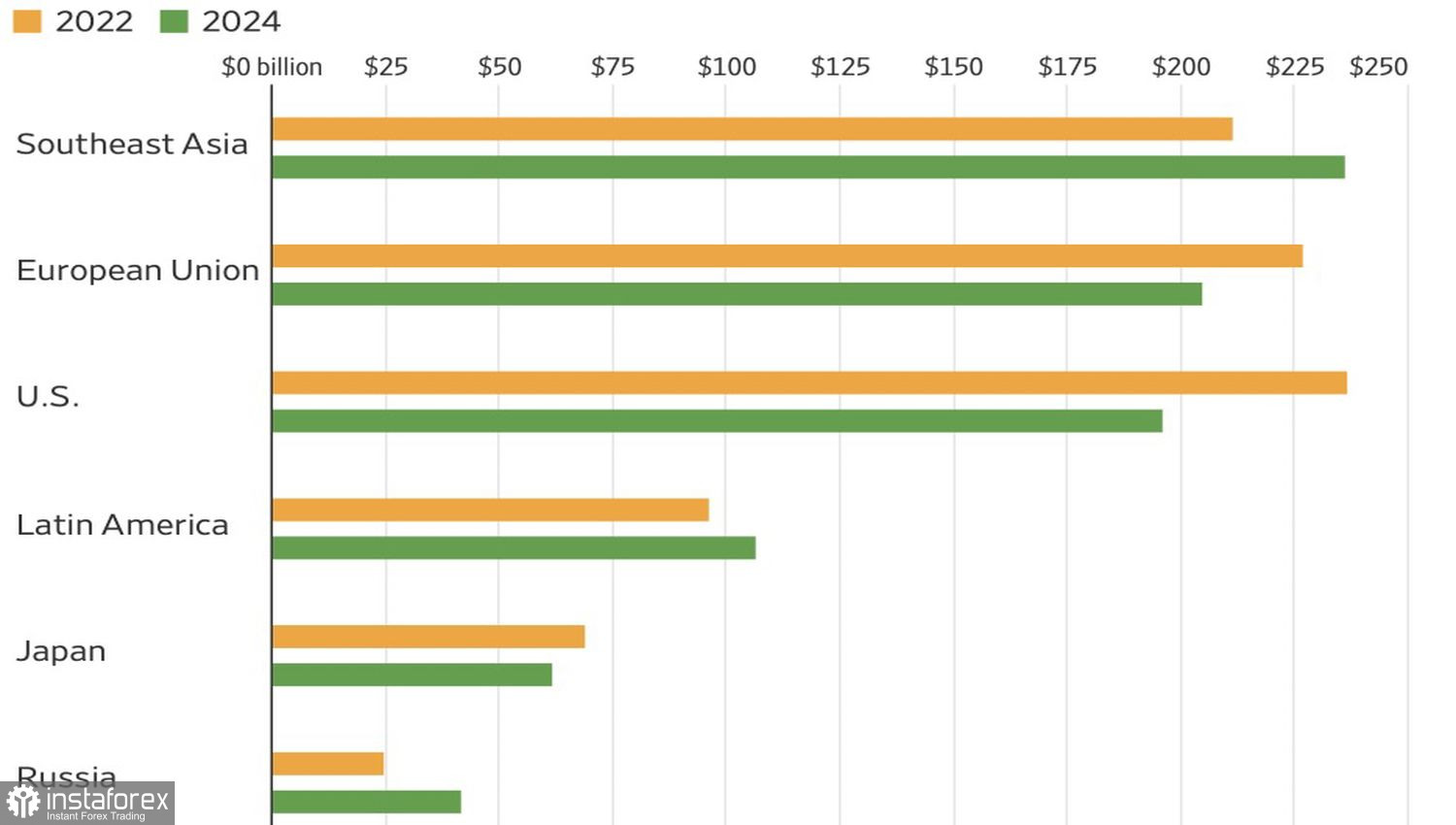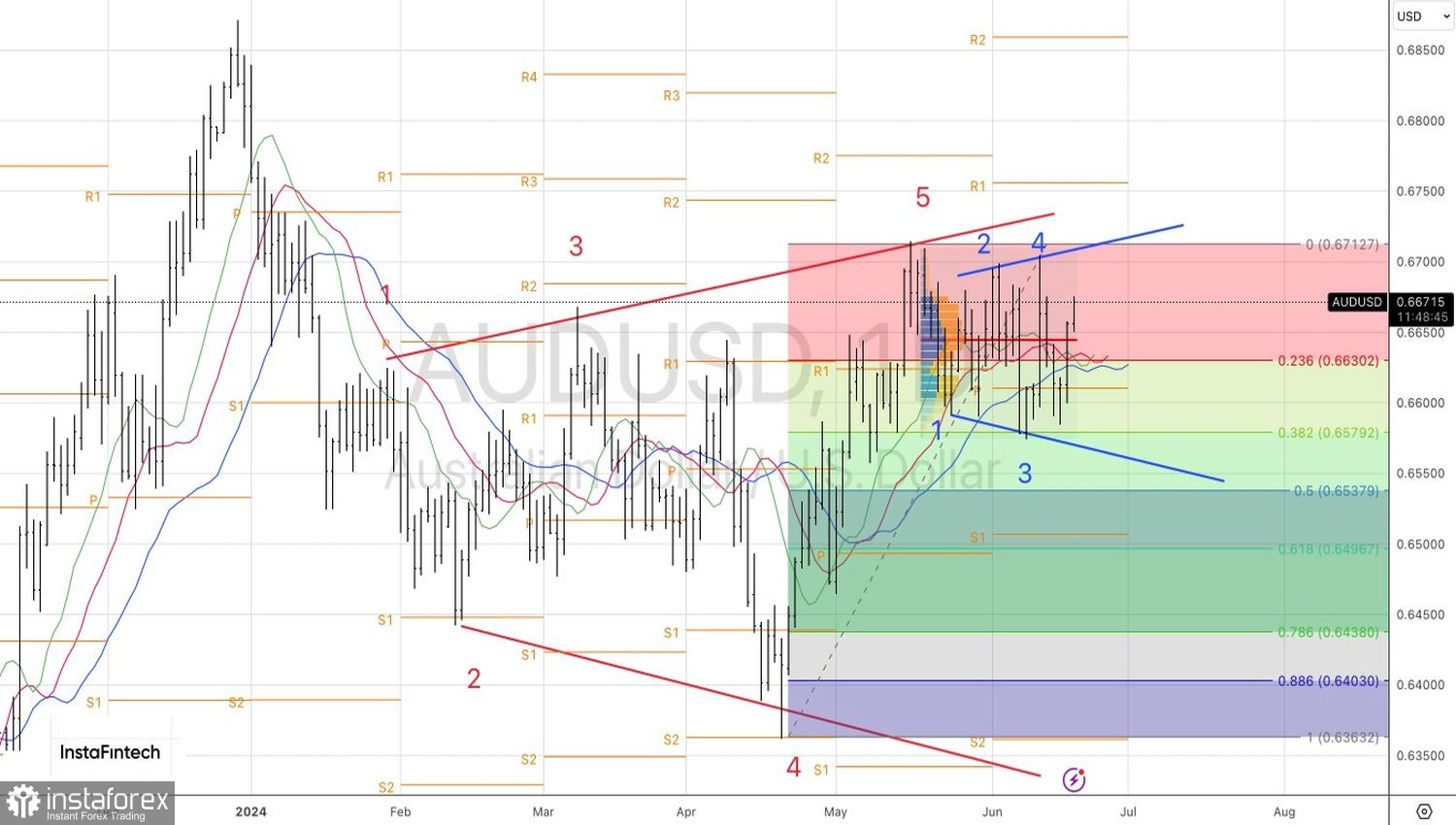Disappointing statistics on retail sales in the United States and the Reserve Bank's statement on a possible increase in the cash rate allowed AUD/USD to go on a decisive offensive. The Australian dollar, supported by divergence in monetary policy, strong global risk appetite and the recovery of the Chinese economy, can work wonders. However, first, it needs to be released from the consolidation cage.
At its June meeting, the RBA left the key rate at 4.35% but noted that it was necessary to remain vigilant about inflation. Michelle Bullock said that the central bank discussed the possibility of resuming the cycle of tightening monetary policy, which allowed the futures market to increase the chances of such an outcome in August from zero to 20%. Australian bond yields and AUD/USD have risen.
While inflation is slowing in the United States and other developed countries, it is much slower in Australia. This leaves the issue of raising the cash rate open. The Fed, against the background of slowing retail sales, inflation and the economy as a whole, is likely to ease monetary policy in September. Divergence is the guiding star of AUD/USD.
Dynamics of retail sales in the USA

The ongoing rally of the S&P 500 and the recovery of the Chinese economy adds fuel to the fire of the potential exit of AUD/USD from consolidation in the range of 0.658-0.67 with a further continuation of the northern campaign. So, in May, retail sales in China increased by 3.7%, and exports jumped by 7.6%. Nevertheless, the improvement in the state of China's foreign trade is a double–edged sword. The EU has already imposed duties on imports of electric vehicles, and the US has recently increased them. If Donald Trump comes to power, the situation risks worsening significantly, putting pressure on the yuan and the Australian dollar.
Despite a 3.6% increase in Chinese exports to the US in May, contrary to past trends, exports to Asian and Latin American countries are accelerating. Conversely, exports to the EU and the US have slowed due to the creation of intermediate links. The most popular destinations are Mexico and Vietnam. Therefore, if Washington wants to stifle China, it should impose tariffs on imports for intermediaries.
Dynamics and Structure of Chinese Exports


Thus, the divergence in the monetary policies of the Reserve Bank of Australia and the Fed, high global risk appetite as evidenced by the S&P 500 rally, and the recovering Chinese economy create a tailwind for AUD/USD. However, the US presidential elections and the risk of Donald Trump coming to power with his protectionist policies are major restraining factors for the pair.
Technically, on the daily chart, AUD/USD shows an attempt by the bulls to break through the upper boundary of the consolidation range of 0.659-0.67. Securing quotes above the moving averages and fair value suggests that they might succeed. It makes sense to buy as long as the pair trades above 0.6645.





















